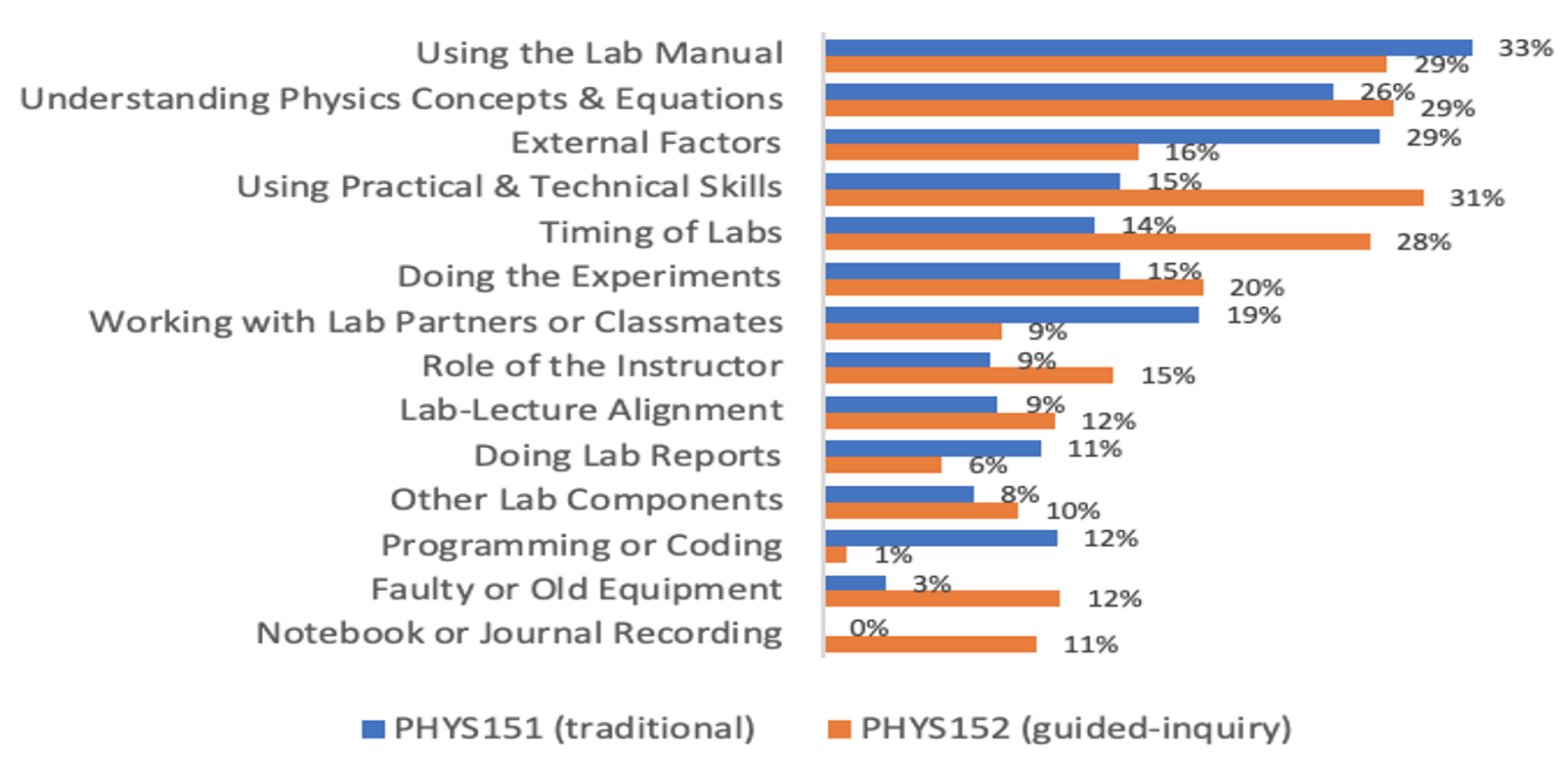A MIXED METHODS APPROACH TO UNDERSTAND STUDENT VIEWPOINTS REGARDING INTRODUCTORY CALCULUS-BASED PHYSICS EXPERIMENTS WHEN CONDUCTING TRADITIONAL AND INQUIRY-BASED LABORATORIES
by Aaron Schwartz
A mixed methods study was conducted to explore student attitudes, beliefs, and perceptions about physics experiments within two introductory calculus-based physics laboratory courses. The two laboratory courses in this study were a traditional-based mechanics & heat laboratory and a guided inquiry-based electricity & magnetism laboratory. The Colorado Learning Attitudes About Science Survey for Experimental Physics (E-CLASS) was implemented as a pre- to post- measure of student attitudes and beliefs. Students’ overall and average fraction of expert-like E-CLASS scores and gains were determined and analyzed using statistical methods. A Wilcoxon signed rank test and a Mann-Whitney U test were utilized for dependent and independent samples, respectively. At the end of the semester, students were also given a set of open-ended questions asking about their perceived learned skills, contributing and hindering factors of success, and suggestions for improvement. Student responses to the open-ended questions were coded and categories were created from the emergent qualitative data. The quantitative (E-CLASS) data showed no statistically significant differences between or across course gains. The qualitative data revealed reasons as to why there may have not been any statistical differences in the E-CLASS data. Students in both courses reported gaining skills and having successes when working with equipment, collaborating with lab mates, and obtaining help from the instructor. They claimed to have hinderances when using and interpreting the lab manual and feeling rushed to complete experiments. They additionally suggested that their laboratory experience would be improved by changing or updating the lab manual and having additional human support during the experiment.
